What we discovered testing Kimberley’s first motorhome
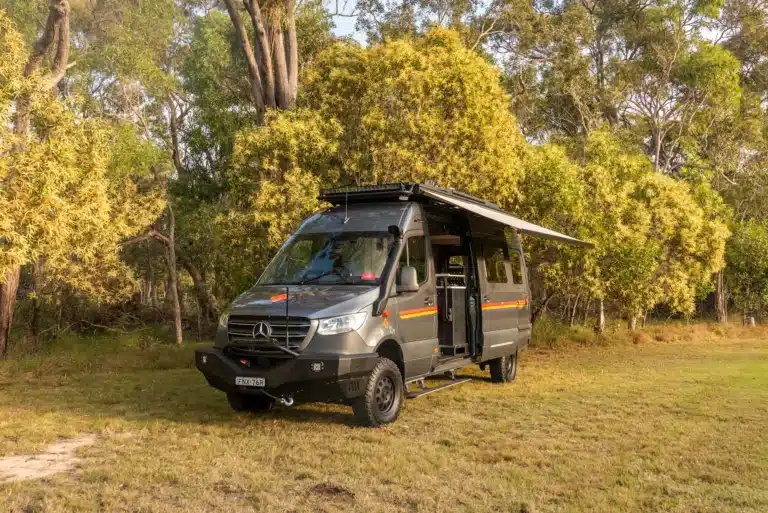



There’s something satisfying about a company that knows how to celebrate a milestone properly. For their 30th anniversary, Kimberley Kampers didn’t just release another caravan variant. They took everything they’d learned building rugged, luxury off-road caravans and poured it into something completely new: their first motorhome.
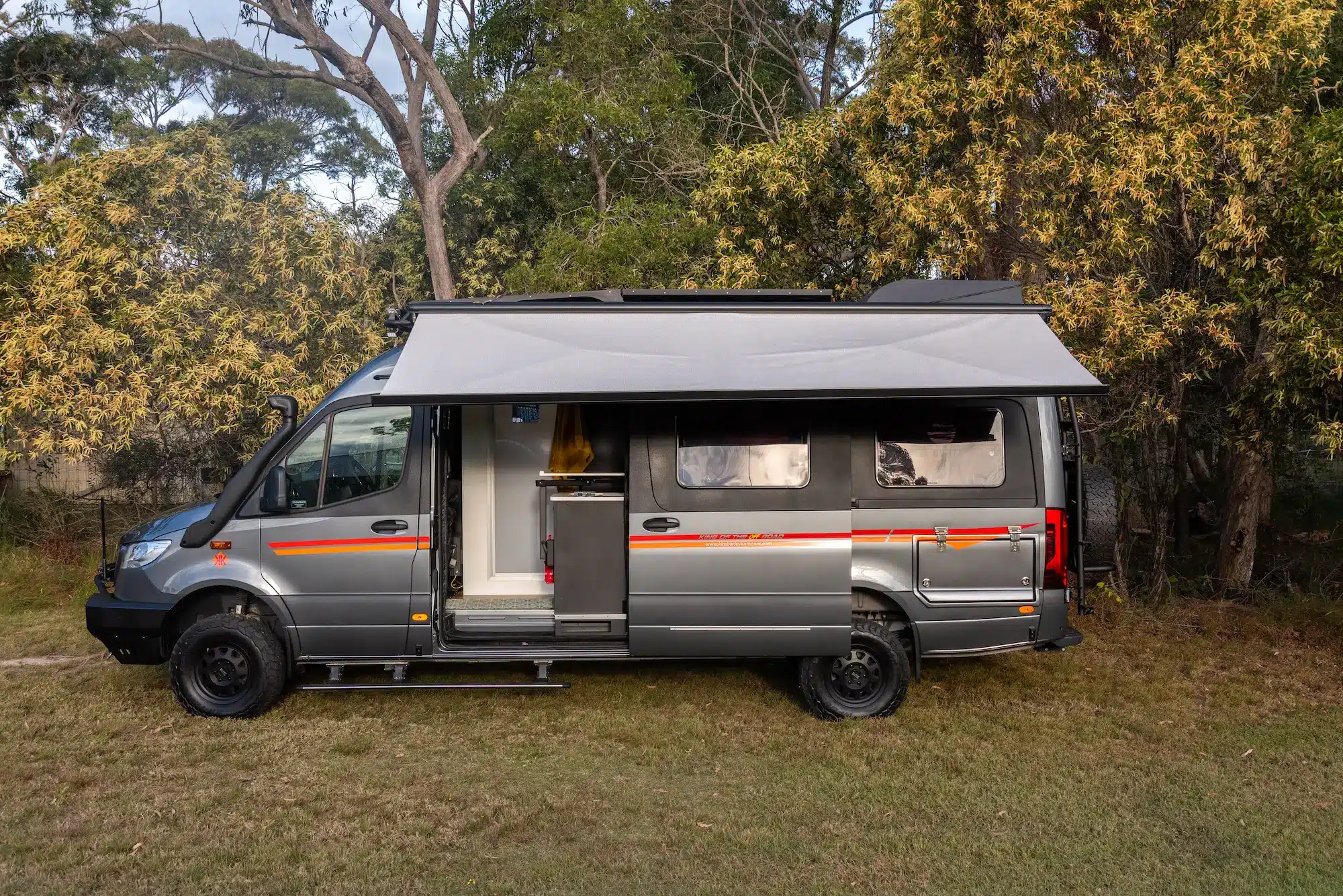
The Kruiswagen represents a significant shift for the manufacturer. Built on a Mercedes-Benz Sprinter AWD platform, it’s designed for travellers who want premium comfort without sacrificing genuine off-road capability. After spending several days testing the top-spec Ecoscape model, I can confirm this isn’t just another Sprinter conversion with some fancy stickers.
The Kimberley Kampers Kruiswagen comes in two versions – the Classic and the Ecoscape. The latter, which I tested, takes the off-grid concept seriously with cutting-edge power systems and eco-conscious materials. Here’s what stood out during my time with it.
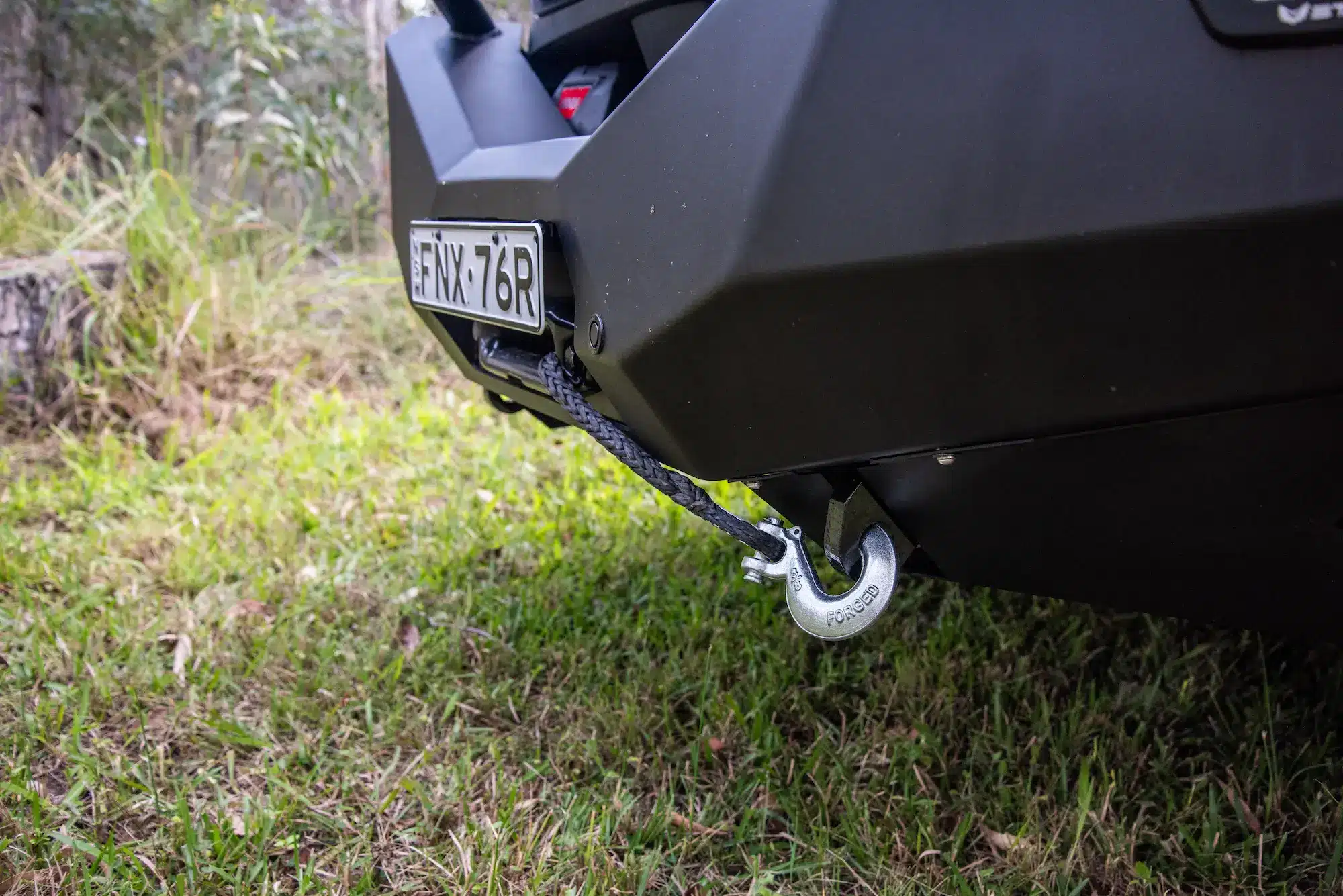
My test vehicle arrived in a striking grey with Kimberley’s signature orange and red graphics (white is available if you prefer understated). But it’s the hardware that caught my attention. This isn’t a mall-crawler pretending to be tough – the Kruiswagen comes with a factory 50mm lift kit, Warn winch mounted up front, BFG All-Terrain rubber, and electric steps that cleverly function as rock sliders when retracted.
The kit list reads like a serious tourer’s wishlist: upgraded suspension designed for corrugations and rough tracks, a snorkel for water crossings, comprehensive underbody protection, roof-mounted ladder for accessing the Aeropod storage pod, driving lights for night travel, UHF communications, and Maxtrax recovery boards. There’s a rear-mounted spare wheel that’s actually accessible, plus dual hot and cold outdoor showers. The 4.5-metre electric awning extends your living space significantly, and if you’re keen, you can add walls and flooring to create a proper annex room underneath.
This setup isn’t about looking the part. It’s about accessing remote camping spots that most motorhomes can’t reach.
I’ll be honest – before testing the Kimberley Kampers Kruiswagen, I thought most “off-grid” claims were overstated. This vehicle changed my mind. At the heart of the Ecoscape sits an EcoFlow 48V Power Hub, and it’s genuinely impressive. If you still need to get your head around 48v, we have created this useful guide
The system pairs a 5kWh lithium battery bank with a 3,600W inverter and 3,000W AC charging capability. Standard solar is 400W on the roof, but you can spec up to 1200W if you’re planning extended remote stays. What this means in practical terms: you can run the 190-litre Bushman dual-zone fridge/freezer, the rooftop air conditioner, and even cook your dinner on electric appliances without touching a generator or shore power.
The integration is slick too. Smartphone apps let you monitor and control everything via Bluetooth and Wi-Fi. The Kruiswagen even comes pre-wired for Starlink internet, which means you could genuinely work from the middle of nowhere. That’s proper freedom.
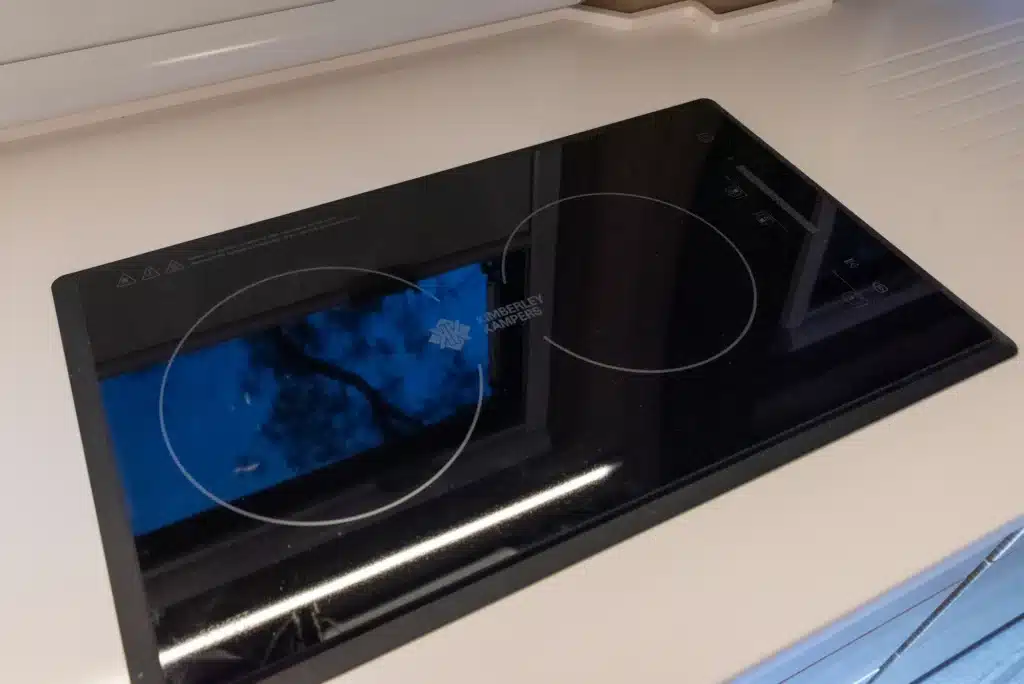
Here’s something that surprised me: there’s zero gas on board. The entire cooking setup runs on electricity, which initially seemed risky until I understood the power system’s capacity. Inside, you’ve got a dual induction cooktop built into solid-surface benchtops, paired with hot and cold water at the sink, a microwave, and even wireless device charging integrated into the workspace.
The outdoor kitchen slides out when you need it, offering a prep bench, another sink with hot and cold taps, and a Ninja portable electric BBQ. After a long day on dusty tracks, being able to cook outside without fussing with gas connections or worrying about wind blowing out flames is genuinely convenient. Plus, you eliminate the weight, compliance issues, and refilling hassles that come with LPG bottles.
Water independence matters just as much as power when you’re planning extended remote trips. The Kimberley Kampers Kruiswagen carries 196 litres of fresh water split across two tanks, complemented by a 50-litre grey water tank for waste. That’s decent capacity, but where things get interesting is the Thirsty Nomad purification system.
Using the Visiflow pump, you can draw water directly from creeks or billabongs, purify it, and add it to your tanks. A high-definition smart monitor tracks your consumption in real-time, so you always know your water status. This isn’t just about convenience – it fundamentally extends how long you can stay off-grid without rationing or stress.
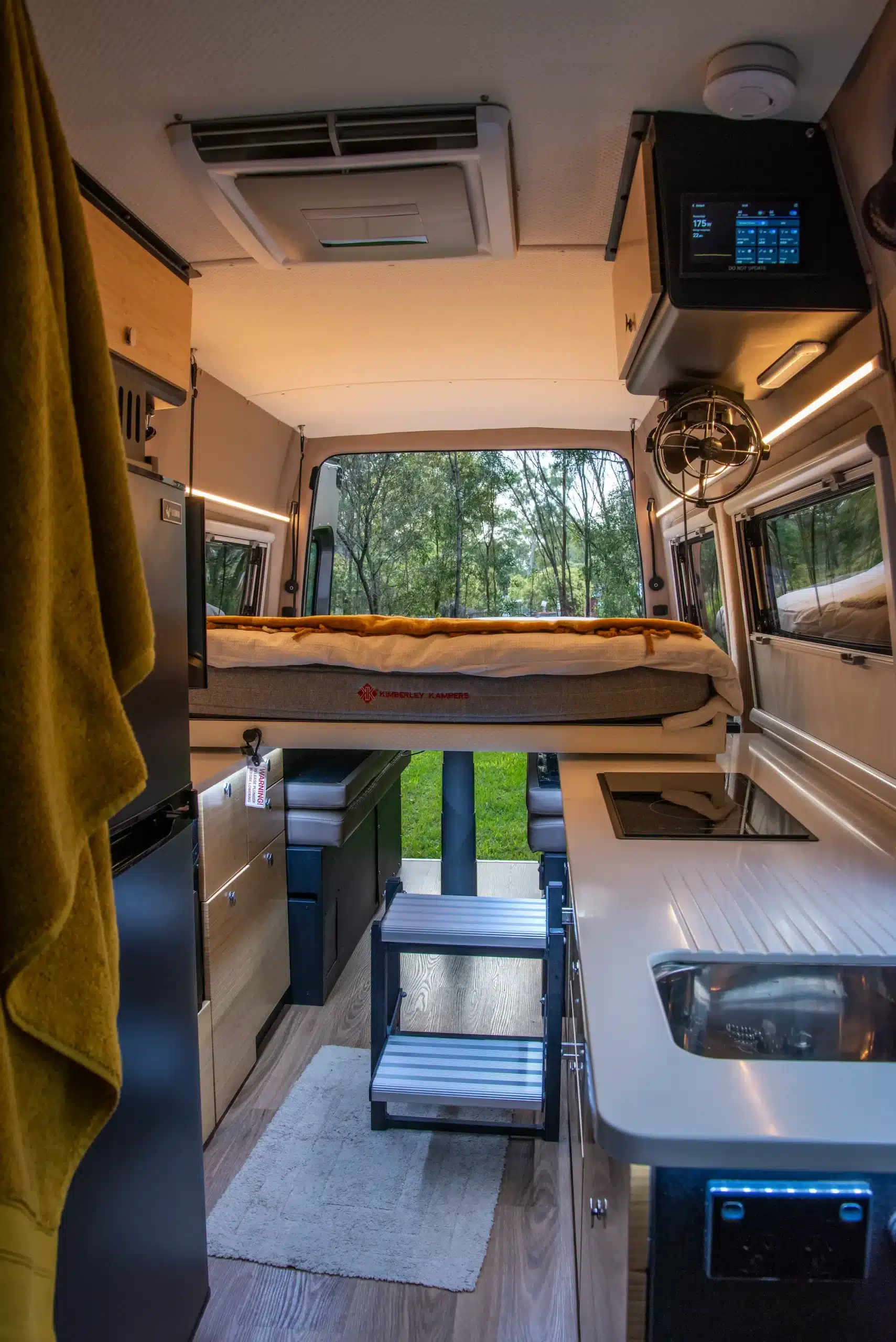
Space is the eternal challenge in any motorhome conversion, and bed placement can make or break the design. The Kimberley Kampers Kruiswagen solution impressed me straight away. The PowerGlide system lowers a full-sized double bed electrically from the ceiling, positioning it over the rear dinette area. The pocket-spring mattress is genuinely comfortable (not the thin foam you find in some conversions), and here’s the clever bit – you can leave it fully made up with bedding during travel.
Access is via a slide-out alloy ladder that’s more stable than it looks, and dual reading lights create a cosy space for evening reading. When the bed’s stowed during the day, you get full use of your living area. It’s the kind of smart design that makes daily life in a compact space actually work.
Walk inside and you immediately notice the construction quality. Kimberley has avoided timber entirely, instead using composite panels for floors, walls, and ceiling. The cabinetry is lightweight aluminium, and they’ve incorporated recycled PET plastics throughout the build. This isn’t greenwashing – these material choices serve practical purposes beyond environmental credentials.
Composite construction means no rot, no water damage, and significantly less weight compared to traditional timber builds. In Australia’s harsh conditions, where humidity, heat, and dust are constant challenges, this approach makes real sense for long-term durability.
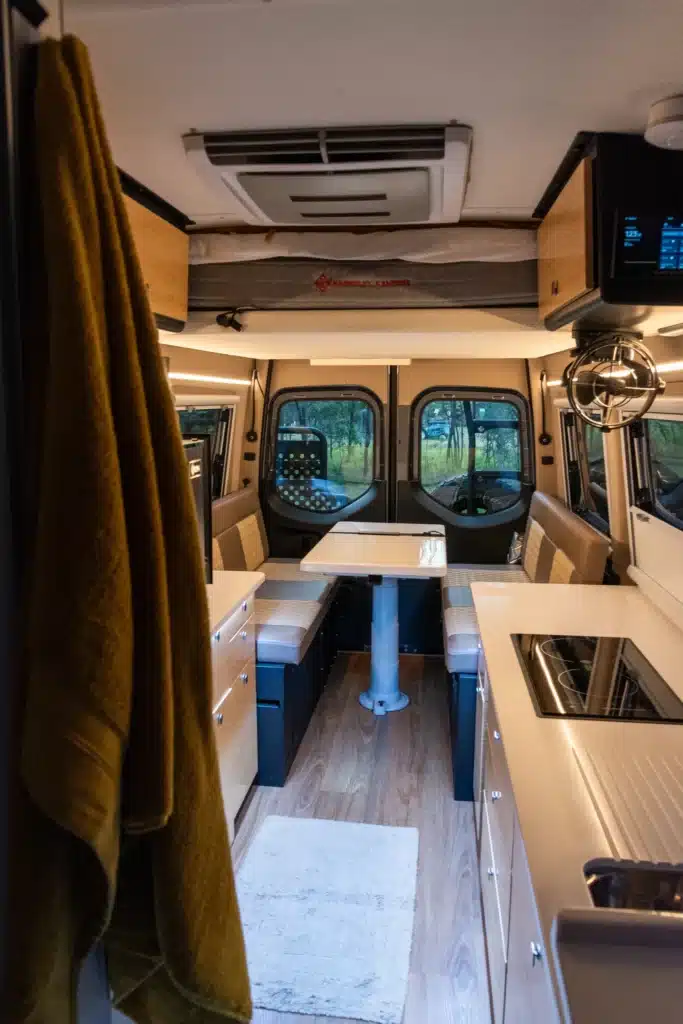
The living area shows thoughtful attention to daily usability. Corian benchtops provide durable work surfaces, LED lighting keeps power consumption reasonable while providing good illumination, and bamboo accents add warmth without weight. The passenger seat swivels to expand your seating options, and there are fold-away tables both inside and outside.
Storage is where the design really shines. Overhead cabinets, cargo nets, soft-lined pockets, and hidden compartments are positioned logically throughout. Everything has a place, which prevents the cluttered chaos that develops in poorly designed spaces. There’s even a clever table-within-a-table setup – lift off the top surface to use outside, revealing a smaller table underneath for indoor use.
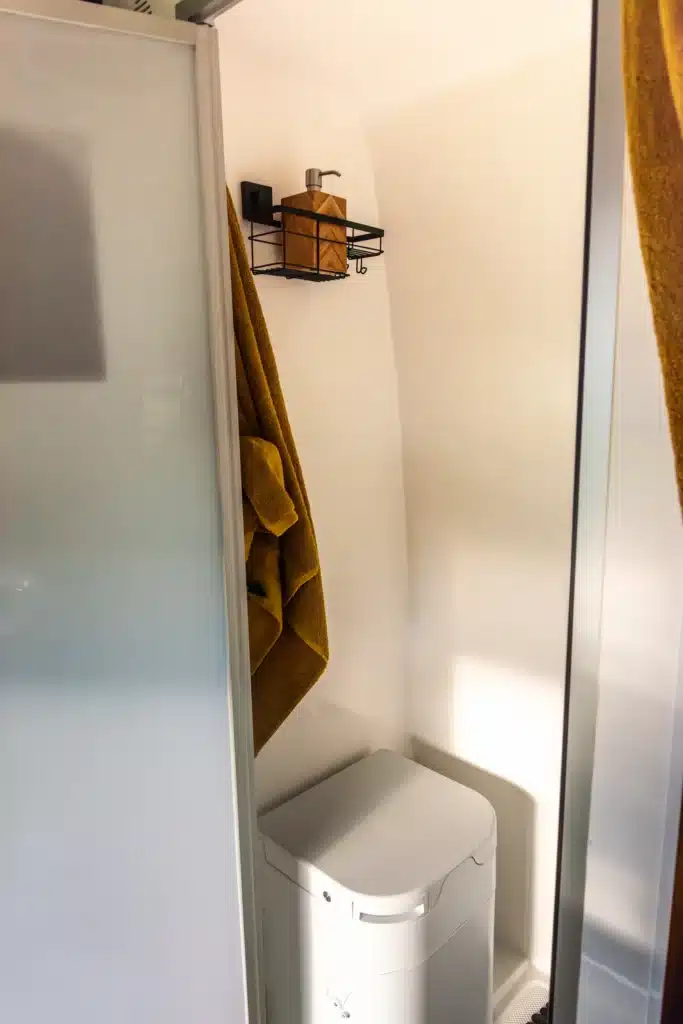
Tucked behind the driver’s seat, the ensuite manages to feel spacious despite the compact footprint. The shower is genuinely usable (not a token cubicle you can barely turn around in), and the composting toilet eliminates the need for dump points. A Webasto system handles both air heating and hot water, which is brilliant for those chilly outback mornings.
Climate control extends throughout the cabin with thermal blinds, insect screens, and tinted caravan-style windows. The rooftop reverse cycle air conditioner maintains comfortable temperatures whether you’re parked in Broome’s heat or the Snowy Mountains’ cold. The well-insulated cabin helps the system work efficiently without draining your battery bank.
The dual kitchen approach initially seemed excessive, but after using both spaces, I understood the logic. The internal kitchen handles meal prep when weather’s uncooperative or you simply want to cook in air-conditioned comfort. The external slide-out kitchen comes into its own for those perfect camping evenings when you want to be outside but still need proper facilities.
Both spaces share the same high standard of finish – solid surfaces, proper sinks with hot and cold water, adequate prep space. The flexibility means you’re never compromising on comfort regardless of conditions. After weeks on the road, that flexibility becomes genuinely valuable.
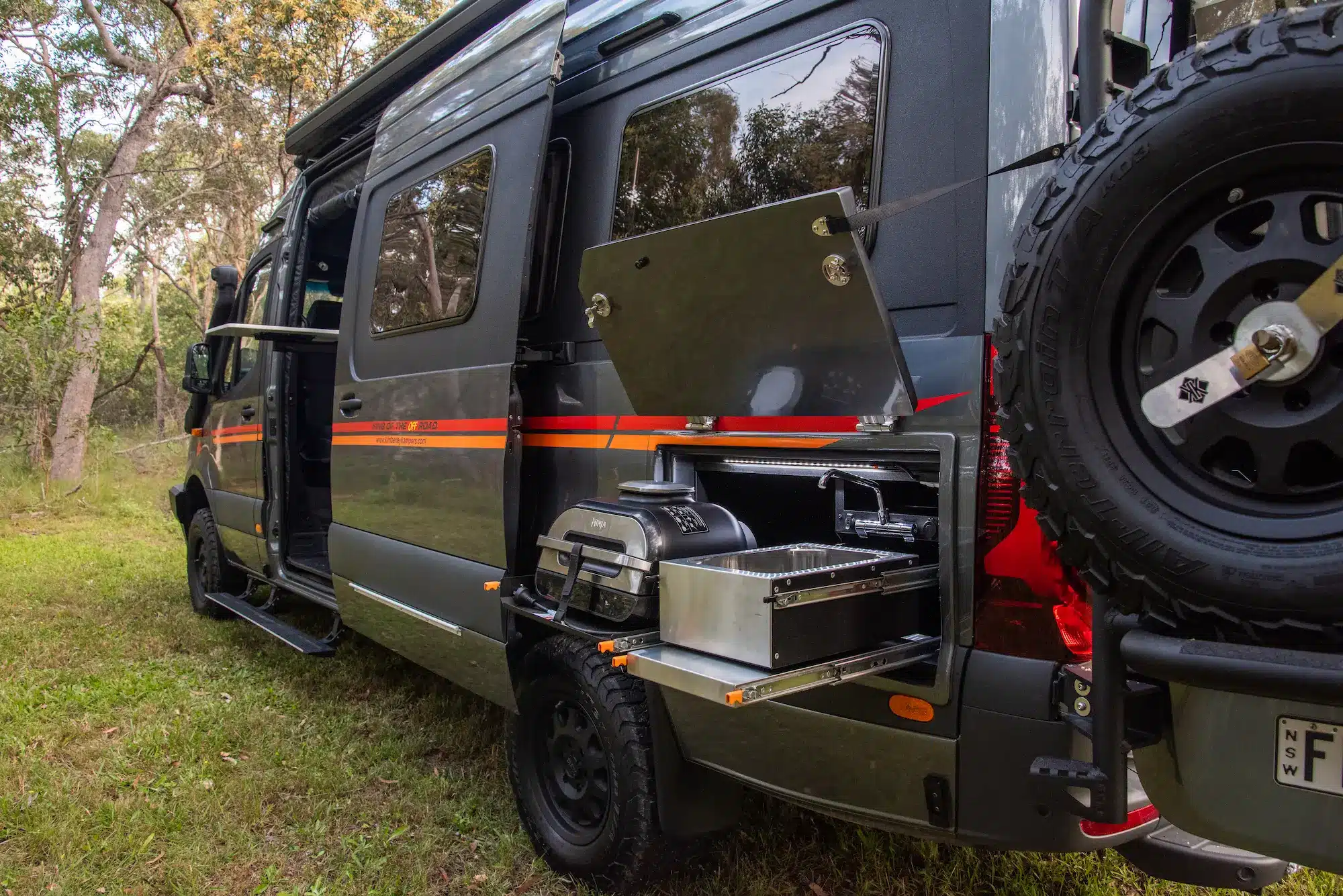
Despite its off-road focus, the Kruiswagen drives well on sealed roads. The Mercedes-Benz platform provides modern safety features and comfortable highway cruising. My only real criticism? The BFG All-Terrain tyres generate noticeable road noise at highway speeds. It’s not unbearable, and it’s a reasonable trade-off for the off-road capability they provide.
Town driving proved surprisingly manageable. The Kruiswagen fits into supermarket car parks without drama, making resupply runs straightforward. Just don’t attempt drive-throughs – the height will defeat you. The Fusion sound system provides decent entertainment for those long highway stretches between destinations.
The Kimberley Kampers Kruiswagen Ecoscape isn’t trying to be all things to all people. It’s specifically designed for travellers who want to explore remote Australia with minimal compromises on comfort and capability. The off-grid systems work as advertised, the build quality reflects Kimberley’s 30 years of experience, and the design shows genuine understanding of how people actually use motorhomes for extended touring.
Yes, it’s an investment. The Ecoscape starts at $244,340, with the Classic model at $196,850. But if your travel plans involve more time in remote locations than caravan parks, and you value genuine off-road ability paired with modern conveniences, the Kruiswagen delivers on its promises. It’s not a vehicle for weekend warriors – it’s built for serious remote touring where reliability and self-sufficiency actually matter.
Five things you need on your radar before you buy an RV
10 top teardrop caravans for weekend getaways
Meet the Kimberley Kampers made from recycled plastic bottles and space tech